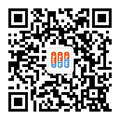Analysis of 6 FCC certification requirements for Citizens Broadband Radio Services
From 4G to 5G, from LoRa, WIFI, BT, Zigbee, to NB-IOT, Cat M, etc. Some are to solve the problem of application scenarios, some are to solve the problem of transmission, and some are to solve the problem of cost.
In 2015, the Federal Communications Commission of the United States passed a commercial regulation of Citizens Broadband Radio Services that operates in the 3.55GHz~3.7GHz frequency band (3.5GHz frequency band, a total of 150MHz bandwidth), referred to as CBRS communication system.
This frequency band is a good frequency band in the increasingly crowded wireless frequency band, and the slightly higher frequency helps to increase the transmission rate. This frequency band, previously occupied by the U.S. Department of Defense‘s military radar and satellite communications systems, is now freed for both civilian use.
Since it is a wireless product, it needs to pass the test certification and obtain market access when it is sold, that is, CBRS certification. When it is sold to the US market, it needs to obtain CBRS FCC certification.
To figure out CBRS certification, you need to understand a CBRS system diagram.


★PAL:Priority Access Licenses
★GAA:General Authorized Access
★IPA:Incumbents Access
★ESC:Environmental Sensing Capability
★SAS:Spectrum Access System
★CBSD CBSDs:Citizens Broadband Radio Service Devices
CBRS establishes a three-level access and authorization framework. Advanced user IPAs are ranked at the first level, generally military radars and satellite communication systems of the US military. Advanced user IPAs are working, and any general user GAA and priority user PAL need to be avoided. The priority user PAL is ranked at the second level, and the general user GAA of the lowest level needs to accept the interference of the advanced user IPA and the priority user PAL or ask for avoidance.

CBRS has two core management and monitoring systems in operation, one is the spectrum access system SAS, which dynamically manages the access registration and certification of CBSD equipment and allocates spectrum usage.
The other is that, in order to ensure the priority of military and satellite communication use, the environmental awareness network ESC is also used to monitor the nearby military and satellite communication frequency bands in use, and after detection, the information is transmitted to the SAS sensor network. SAS will coordinate operations between users in three layers of authorization. In order to comply with the provisions of the CBRS FCC certification on guaranteeing access priority in the field of military operations.
CBRS FCC certification has designed a set of certification procedures. Since 2015, CBRS FCC certification requires citizens‘ broadband radio service equipment, CBSD, to be registered and authorized by the SAS provider before initial service transmission. It also requires that SAS administrators need to report to the FCC. Staff, as well as other SAS providers, disclose CBSD registration details and only need to disclose the availability of aggregated spectrum to the public.
CBRS FCC certification requirements
(1) The power of any CBSD device and End User Device must meet the power limit requirements of the following table of the FCC:

 ★PSD:Power Spectral Density
★PSD:Power Spectral Density ★End user device: The device authorized and controlled by CBSD. These equipment must not be used as an intermediate service link or provide services through other end user equipment or other CBSDs
(2) Modulation requirements: The system operating in Citizens Broadband Radio Services - CBRS must use digital modulation technology and cannot use analog modulation technology.
(3) FCC certification frequency requirements for Citizens Broadband Radio Services - CBRS:
★ GAA frequency works in the 3550-3700 MHz frequency band.
★ PAL work in the 3550-3650 MHz frequency band.
★ Limit each PAL to 10 MHz bandwidth.
(4) Citizens Broadband Radio Services - CBRS working environment FCC requirements:
★ CBSD Class A products are deployed indoors, and the antenna length cannot exceed 6 meters. It must stop transmission, move to another frequency range or change its power level within 60 seconds as instructed by the SAS.
★ CBSD Class B products are deployed outdoors, and the antenna length is more than 6 meters. When registering with SAS, information such as antenna gain, beamwidth, azimuth, downtilt and antenna height must be reported.
★ End User Devices devices can only operate if they can positively receive and decode authorized signals sent by the CBSD, including the frequency and power limits on which they operate. End User Devices must cease operation, change frequency, or change their operating power level within 10 seconds of receiving an instruction from their associated CBSD.
(5) Citizens Broadband Radio Services - CBRS FCC certification SAR requirements:
Licensors and manufacturers are expected to comply with the prescribed RF radiation exposure FCC SAR requirements. An application for device authorization for a mobile or portable device must contain a statement confirming that both the basic transmit power and radiated spurious comply with these requirements, and technical information showing the basis for this statement must be submitted to the Commission upon request.
(6) The SAS must also verify the FCC ID for any CBSD to access its services and verify that the FCC ID is valid before authorizing the start of the service. Only devices with a valid FCC ID are allowed to access the SAS. This means that all CBSD devices and End User Devices need to be certified by the FCC ID.
Next
Deeplight has been conducting wireless electronic product certification for a long time, and has accumulated rich experience in CBRS FCC certification, and is good at PTCRB, GCF, JATE, BQB and other certifications. Welcome customers to consult.
Recommended items
-

Introduction to FCC Fundamentals
Electronic communication products such as radio, television, satellites, telecommunications, and cables entering the US market require FCC certification. The full name of FCC is the Federal Communications Commission of the United States, which is an important government agency responsible for managing and authorizing the use of radio and electronic devices....View more -

Explain FCC ID certification and testing standards for walkie talkies
Explanation, walkie talkie, FCC ID certification, FCC ID testing standardsView more -

Six major testing FCC certification items for Wifi products
There are more and more WIFI products, and the development of mobile communication technology has prompted more and more composite devices to appear on the market, such as 3G wireless routing devices, which have both 3G and WiFi functions, and use 3G as high-speed network access....View more -

RF test in NFC, what should be paid attention to in CE/FCC RF test?
RF test in NFC, what should be paid attention to in CE/FCC RF test? The mainstream methods of mobile payment are NFC and RFID. The model of implementing mobile payment using NFC technology is gaining more and more recognition. Moreover, relevant departments and enterprises in China are accelerating research on utilizing NFC technology to achieve mobile payment, helping...View more




